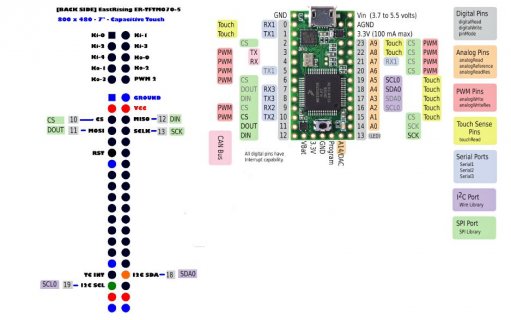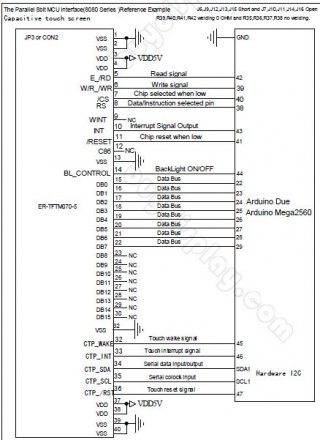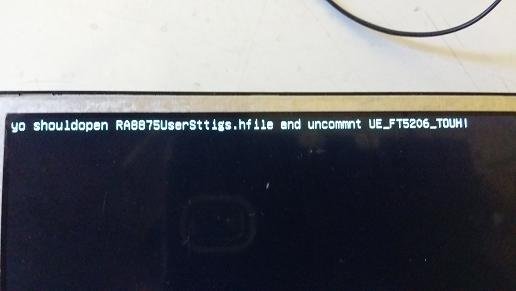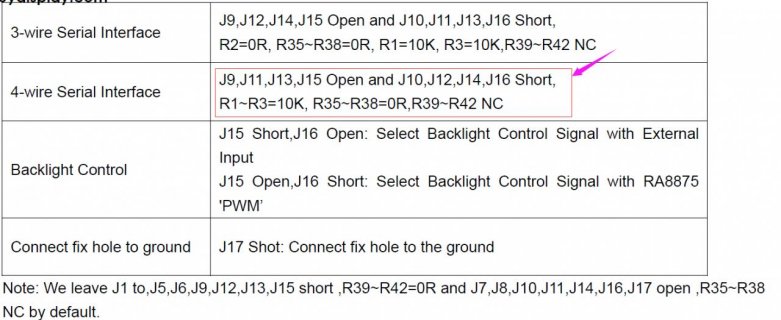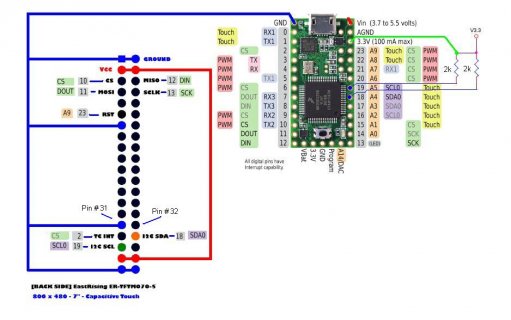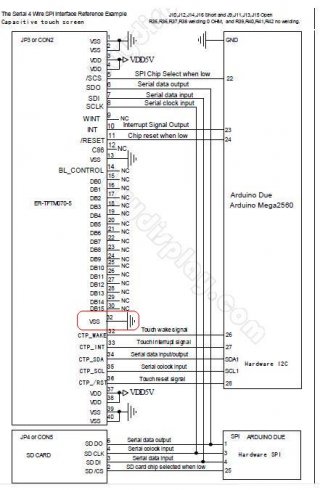The SD holder mounted on buydisplay will not work, you can get working at incredible low SPI speed but sincerily I never get really working, they mounted capacitors, series resistors and prolly pullups.
Also, the RA8875 works in SPImode3, SD works in SPImode1.
To get an SD work you should isolate the RA8875 with the circuit I described in github wiki, get a quality SD holder (like the one mounted in the PJRC audio board) and mount very near Teensy (or you can use the SD card holder homemade adaptor described
here .
But you have to isolate the RA8875 wiith a
small circuit described here or it will not work!
Just a note, the RA8875 it's not the best chip to send images, it's extremely fast driving his accellerated geometric primitives, internal fonts, etc, etc. but receiving pixels it's a slow business.
The best way I found it's send an entire line, better than one pixel a time but still not efficent, I'm actually cannot find another way in datasheet, so don't expect to read large images in less a second on a 800x480 display, it will take not less than 3 secs using the max SPI speed and a SDholder very near to Teensy with a high speed SD card.
It's extremely important you put the SD card very near Teensy with the shotest wires you can.
There's an 2 examples that uses SDfat and the new Paul modified SD library optimized for Teensy in the library, both working.
The RA8875 has a separate SPI that can drive internally (very fast and using DMA) a SPI flash chip, it looks promising but it's a bit complicated since you have to program SPI Flash chip separately, I will test this option in near future since the library already support that.
About the RA8875 library...
The library can use any permitted Teensy 3.0,3.1 and LC configuration, it's compatible with the PJRC Audio Card and it's SPI Transaction compatible, it works well with the new SD optimized for Teensy library by Paul. Datasheet on hand the RA8875 has a SPI limit of 12Mhz but (after weeks of testing) actually I'm driving it at 22Mhz without problems by modulating SPI speed on some register so when you work with that SPI speed you always have to use short cables and good decoupling, it can work with a good quality breadboard but use always short cables and be sure contact it's good.
About the FT5206..
The RA8875 library already support it internally, don't need an external FT5206 library, just go to RA8875UserSettings.h file and uncomment #define USE_FT5206_TOUCH.
Chech the examples->_capacitiveTouchScreen->FT5206_touchScreen.ino example.
About wiring...
It's correct, but you missed the
TC_INT pin for the Touch screen (try pin 2) and
you MUST use 2 pullup resistors on SDA and SCL (2 x 2k2 resistors between each I2C line and 3V3).
Note that ER-TFTM070-5 uses a lot of current for backlight,
you will need a separate supply! In that case you need to wire the
RST pin as well (any free Teensy pin should work).
Some user configured ER-TFTM070-5 at 5V and they are able to drive it by 5v from Teensy but you can easily get garbage on screen because the voltage should be at list 4.8V and stable, not less.
If you have set ER-TFTM070-5 at 3V3 volt DO NOT SUPPLY with Teensy 3V3 out or you will destroy your Teensy!

